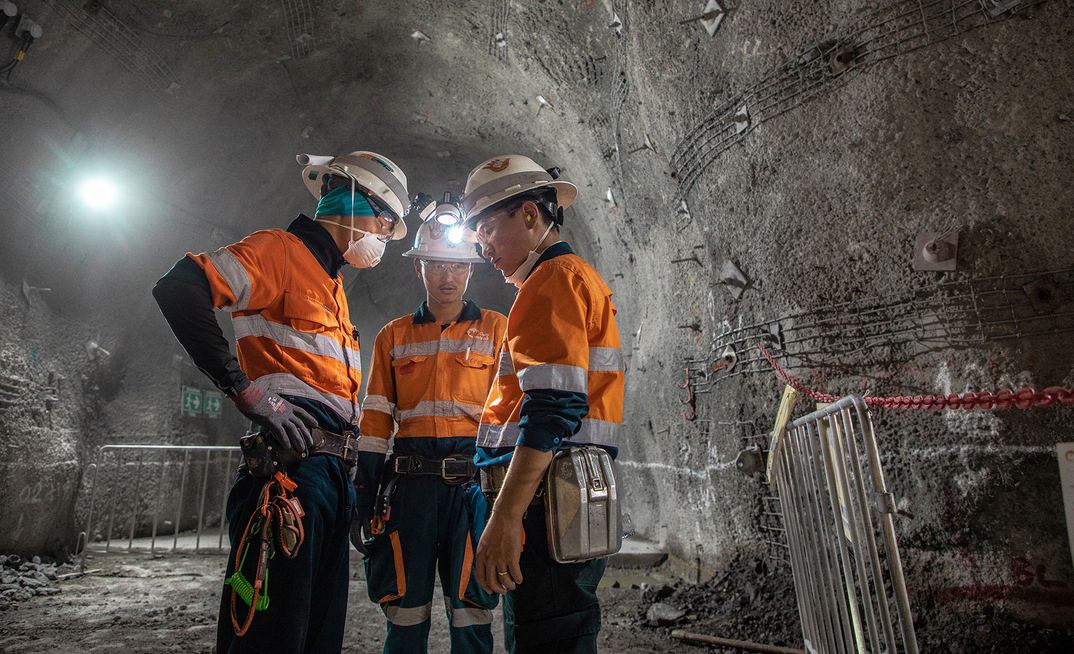Mongolia’s economy has long been defined by its vast mineral wealth. Mining remains the country’s cornerstone industry — driving exports, infrastructure, and government revenue. Yet, as technology, finance, and digital innovation expand, a quiet shift is happening in the workforce: talent is moving from mining into technology and knowledge-driven sectors. This transition, known as cross-industry talent mobility, is reshaping the future of Mongolian employment. It reflects how professionals are rethinking their careers — seeking not just financial stability, but flexibility, creativity, and long-term growth.
1. Why Talent Mobility Matters for Mongolia’s Economy
Mongolia’s economy is diversifying. As industries such as fintech, logistics, renewable energy, and software development grow, they compete for skilled professionals — many of whom gained their early experience in mining or resource-related sectors.
Cross-industry mobility matters because it transfers valuable skills and discipline developed in mature industries like mining into emerging ones such as technology.
For example:
Project managers from mining bring proven operational leadership into software development teams.
Financial analysts from resource companies find new roles in fintech startups.
Engineers skilled in automation and process control adapt quickly to tech-based manufacturing or IoT solutions.
This blending of experience strengthens both industries — mining becomes more data-driven, while technology benefits from mature systems thinking and risk management skills.
2. Why Mining Professionals Are Moving Toward Tech
Mining professionals — particularly those in engineering, project management, and data roles — are discovering that their skills are in high demand in tech-driven companies.
a. Transferable Skills
Mining develops technical precision, problem-solving, and operational resilience — all of which are directly applicable to technology fields.
Skills like:
Data analysis and monitoring
Systems optimization
Safety and compliance management
Equipment automation and control
are now equally useful in software, AI, and renewable energy startups.
b. Better Work-Life Balance and Flexibility
Tech careers often provide more flexible work arrangements than site-based mining jobs. After years of rotation-based schedules or remote camp assignments, many professionals are drawn to hybrid or city-based positions in Ulaanbaatar’s growing tech sector.
c. New Career Purpose
Technology roles often appeal to professionals seeking innovation and purpose — building digital products that reach people, improve systems, or solve social challenges.
3. How Employers Benefit from Cross-Industry Hiring
Forward-thinking companies are starting to see cross-industry hiring not as a risk but as a competitive advantage. Mining professionals often bring discipline, analytical skills, and stakeholder management experience that help startups mature faster.
Key Employer Benefits:
Broader problem-solving capability — diverse industry backgrounds foster innovation.
Reduced training time — experienced hires adapt quickly to new tools.
Enhanced risk management — mining-trained professionals bring compliance and safety awareness often missing in young tech teams.
Cultural stability — workers from structured industries often bring reliable habits to fast-paced digital environments.
Recruiters in Mongolia increasingly recommend hiring managers consider competency-based evaluations rather than rigid industry filters — focusing on what candidates can do, not just where they’ve been.
4. Barriers to Cross-Industry Career Shifts
Despite clear advantages, Mongolia’s labor market still faces some practical barriers:
Perception gaps: Employers sometimes undervalue candidates from “non-tech” backgrounds.
Limited reskilling opportunities: Few structured programs exist to help mining professionals learn coding, product management, or UX design.
Language and digital literacy: English proficiency and familiarity with global software platforms are still uneven across workforce segments.
Networking differences: Mining and tech professionals often move in separate circles, limiting exposure and opportunity flow.
Overcoming these barriers will require collaboration between employers, recruiters, and training providers to bridge knowledge and cultural gaps.
5. The Role of Recruitment Partners
In this shift, local recruitment partners such as Higher Careers play a crucial role. They help companies identify transferable talent, advise on compensation benchmarks, and match professionals to industries they may never have considered before.
Recruitment experts are particularly useful for:
Assessing cross-industry potential and soft-skill alignment
Educating employers on candidate adaptability
Supporting re-entry or reskilling transitions through tailored onboarding plans
When companies and recruiters collaborate closely, they unlock hidden talent and accelerate diversification — which benefits the entire economy.
6. How Professionals Can Prepare for a Cross-Industry Move
If you’re a professional in mining or a related field thinking about shifting into tech or another high-growth sector, preparation matters.
Steps to Take:
Assess Your Transferable Skills: Identify which of your current abilities (data, project management, automation, leadership) are relevant in tech.
Upskill Strategically: Focus on practical digital skills — from Python and SQL to product design or agile project management.
Update Your Profile: Use platforms like LinkedIn and local job boards to reflect your future potential, not just past roles.
Connect with Recruiters: Partner with local executive search and recruitment firms familiar with cross-industry placements.
Stay Curious: Attend tech meetups, short courses, and webinars to stay connected with emerging opportunities.
7. Mongolia’s Emerging Tech Landscape
The local tech ecosystem has grown rapidly, creating new jobs in software, fintech, and digital infrastructure. Key Mongolian tech and fintech companies like HiPay, LendMN, and Pocket are leading examples of homegrown innovation — building platforms that integrate payments, lending, and data services for both businesses and consumers.
Their rise signals a larger trend: technology is no longer a niche sector — it’s becoming a core driver of Mongolia’s modern economy. This growth opens career pathways for professionals who once thought their skills belonged only in traditional industries.
8. Government and Education Initiatives Supporting Mobility
To sustain this transition, policy and education initiatives are evolving:
Universities and technical colleges are introducing programs in software engineering, AI, and data science.
The Mongolian government has encouraged tech innovation through initiatives like the “Digital Nation” program, focusing on digital literacy and e-government expansion.
Partnerships with international organizations (ADB, World Bank) support reskilling and workforce modernization.
Such initiatives will ensure Mongolia’s workforce remains future-ready and adaptable — capable of moving between sectors as the economy evolves.
9. What the Future Holds
In the coming years, cross-industry mobility will shape the next generation of Mongolian professionals. The most successful workers — and companies — will be those who learn to bridge industries, speak multiple “business languages,” and adapt quickly to emerging technologies. Mining built the foundation of Mongolia’s economy. Technology and innovation will build its future. The bridge between the two is talent — flexible, ambitious, and ready to grow.
Talent mobility isn’t just about career change; it’s about national transformation. When professionals cross from mining to tech, they don’t just change industries — they help redefine what’s possible for Mongolia’s future economy. Recruiters, companies, and policymakers who support this movement will play a direct role in shaping the country’s long-term competitiveness and growth.


